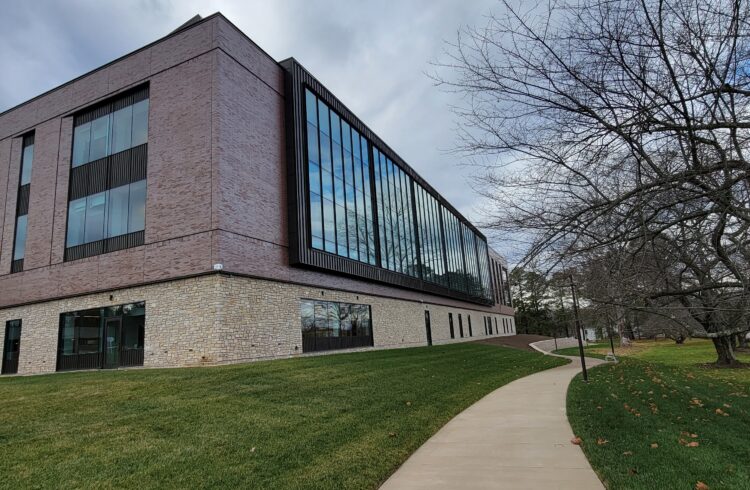
Experts in mitosis (cell division) at the University of Virginia Health System have made discoveries that explain how one protein – the kinase Aurora B – could have such a large role in guiding and policing the process of cell division. This discovery ultimately may help to explain spatial regulation during cell division, according to their findings, published in Science on Jan. 24.
During the final stages of cell division, each chromosome has two replicated DNA strands that must be divided between the two new cells. Todd Stukenberg, Ph.D., Associate Professor , and his team in the UVa Department of Biochemistry and Molecular Genetics, posed two questions that their research in part has answered:
1. Chromosomes must align along the central axis of a mitotic spindle before they can be pulled apart and the two chromatids placed into the two daughter cells. If a chromosome is not yet aligned, how does the cell know it should not divide?
2. Microtubules are the structures that attach to the ends of the cells to pull and divide them in half during cell division. How does the cell recognize improper microtubule attachment to chromosomes, and how does the cell fix them before division?
Aurora-B held answers to both of these questions.
“Kinases are information processors in the cell. We knew from earlier studies that Aurora-B was an important mitotic regulator and could turn on a ‘wait’ signal if chromosomes were not aligned. New data gives important insights into how the kinase is specifically activated under this condition,” Stukenberg said. “Likewise, Aurora B kinase is required to fix improper microtubule attachments, so that each chromatid can be pulled apart to create two equal new cells, each containing exact copies of the genetic material. Our data also suggests how improper attachments activate Aurora B.”
Stukenberg and colleagues investigated the activation of Aurora-B and found that there are at least two independent mechanisms to activate Aurora-B that depend on the kinases location on the chromosome. Moreover, they were able to describe two distinct activation mechanisms:
1. Aurora-B activation at centromeres needs two cofactors, telophase disc-60kD (TD-60) and microtubules. TD-60 regulates Aurora-B at several levels, because TD-60 localizes both the chromosome passenger complex and a histone kinase activity generated by Haspin kinase to centromeres.
2. Aurora-B substrates can inhibit kinase action, and this inhibition is relieved by phosphorylation of these substrates by other kinases (Plk1 and Haspin kinases).
“The activation mechanism, especially the requirement for microtubules, provides insight into how Aurora B could process information for a number of mitotic functions that others and we have shown that the kinase regulates,” says Stukenberg.
Implications for Cancer Treatment
Aneuploidy (higher or lower than expected numbers of chromosomes in new cells after cell division) is found in virtually every cancerous cell. Aurora B appears to be essential to prevent this missegregation of chromosomes that generates aneuploidy . Aurora kinases are overexpressed in many solid tumors and can act as oncogenes. This study also provides insight into the role of the kinase in these processes.
This finding has implications for cancer treatments. “If you can inhibit Aurora-B, which helps to organize the microtubules, and combine that with taxanes or vincaalkaloids, which poison microtubules, then you might induce a better killing of the cancer cells,” Stukenberg explained. “Combination therapies that include Taxol® and Aurora-B inhibitors are a promising research track for chemotherapy.” In fact, a large number of companies are currently exploring antimitotics, including inhibitors of Aurora kinases as potential chemotherapeutics. Identifying the mechanisms of Aurora activation suggests new ways to inhibit the kinase. Moreover, the finding that there are multiple activation mechanisms suggests that targeting only one of the Aurora B activation pathways could limit side effects of inhibiting total kinase activity.
Looking into the future, “We are currently testing the exciting hypothesis that Aurora-B actually generates spatial information that tells chromosomes where they are on the spindle,” Stukenberg said.


